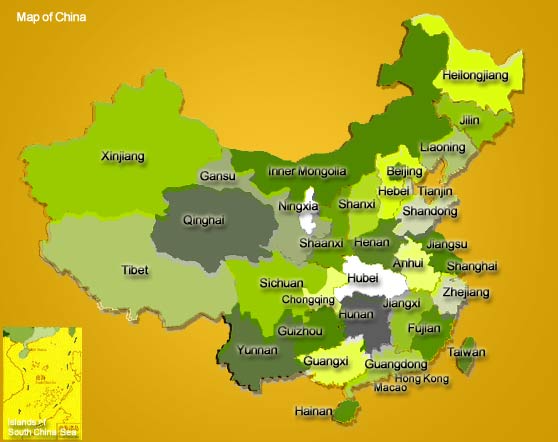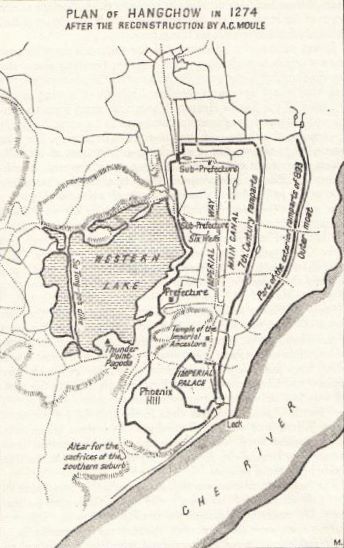|
ZH
Guo Tuotuo
Zhong Shu Shu
(The Cultivating of Trees / The Book on the Art of Planting Trees)
{
Kuo
t’o t’o
/
Chung Shu Shu
},
7th or 8th century. Three volumes dealing with cereals, vegetables,
fruits, and trees include information on pruning and propagation.
Guo was a villager experienced in husbandry and his village of Feng-lo was situated
near and to the west of the vicinity of the capital. His true name is unknown: Tuotuo
("camel") was his pseudonym because of his humped back. It is also
said that he was an outstanding expert and innovator in dwarfed potted
tree culture, some of which is described in this work.
Tang dynasty literatus Liu Zongyuan { Liu Tsung-yüan } (773-819) popularized him in his Biography of the Gardener Guo Tuotuo. Liu was born in or near Changan { Ch'ang-an } , the large and many-faceted Tang capital in Shaanxi province having a population of between one and two million people, the hub of all East Asia. After a highly successful early career in civil government, he was reassigned to a minor post in Hunan Province following the abdication of Emperor Shunzong { Shun-tsung } in 805. A decade later, he was banished even farther away, to the ethnic minorities area of what is today Guangxi province in south central China. He was governor there for four years, and a temple and tomb was built in his honor in Liuzhou, west of Guangdong province. His works in the capital were bureaucratic in nature, while those in exile are considered to be his finest. Throughout his life, his most cherished dream was to be a public servant who did good for the livelihood of the people. His participation in the Confucian revival movement largely represented his effort to compensate for his inability to fulfill such a wish. He did not choose to be an intellectual champion of the Confucian cause, but rather, was forced to be one by circumstances. Liu would be regarded by history as a fine prose stylist and a political opportunist. He played an important role in making possible a process that resulted in the formation of Neo-Confucianism. His works showed synthesis of both Daoism and Buddhism (which was then sweeping across China). He is particularly known for his allegorical writings and for his Aesop-like fables about animals. The Liu family's fortunes declined later and his descendants lived south of the Nanling Mountains which separate Central China from South China. "The most notable of these [model agriculturists from the past] was the pseudonymous author of the Book of Planting Trees (Zhong-shu shu), who took his name from Liu Zongyuan's (773-819) allegory 'Biography of the Gardener Guo Tuotuo' (Guo Tuotuo zhuan)." According to Liu's allegorical sketch, "Biography of Camel Kuo, the Gardener," Camel Kuo was known throughout the area for his green thumb, "and all the great and wealthy residents of Ch’ang-an who planted trees for their enjoyment or lived off the sale of their fruit would compete for the favour of his services." No tree that Kuo planted ever failed to thrive. Asked for the secret of his success, Kuo replied that he allowed the trees to grow according to nature. He did not try to cramp [sic] or crowd them, but treated them with a sort of benign neglect. "When a tree is planted its roots should have room to breathe, its base should be firmed, the soil it is in should be old, and the fence around it should be close. When you have it this way, then you must neither disturb it nor worry about it, but go away and not come back." In this fable Liu stated his theory of laissez-faire government. The good official has little to do except act as an example for his people. He does not bother his "constituency" with commands to do what they ordinarily would or with other bureaucratic tortures. Note: there is no particular internal indication that the trees in this fable were specifically dwarfed or potted. Guo was Liu's servant and was good at planting trees and growing flowers. He handed on his horticultural skills to his grandson -- who then happened to support Liu's grandson by growing trees and flowers. The latter, a brilliant scholar and man of learning, had passed the imperial examination at county level, but found that there was no opening for an official career. Though the two men had adequate simple food all year round, it was no life for the learned scholar. Low in spirits the young man often passed time by sleeping in the daytime. "This work [Zhong Shu Shu] is not known from extant copies. It is known through Ku Chin T'u Shu Chi Ch'eng [Gu Jin Tu Shu Ji Cheng], published in 1726. This latter work, a compendium of Chinese knowledge, is one of the most monumental publishing tasks ever achieved. It was produced in moveable type and is reputed to contain 852,408 pages (Giles 1911). Unlike Western encyclopaedias, it is not a synthesis; rather, it is a collation of previously published work, and, for example, contains the work by Guo Tuotuo." 1 |
|
ZH
Tao Gu
Qing-i-lu
{
T'ao Ku
(c.902-970) /
Ch’ing-i-lu
}
,
c.965. A Northern Song dynasty collection of expressions from the
Tang and Five Dynasties (618 - 960) and arranged by subject matter.
Includes two particular stories: about a malachite rock which resembled
a mountain, was purchased for a thousand pieces of gold, and was made into a
bo-shan
incense burner, and also about a little model of Mount Li (the tomb of
Emperor Qin Shi Huang Di, d.207
B.C.E.
). For the latter the landscape, houses, people, animals, forests, bridges,
and highways were all represented in detail in Borneo camphor wood.
2
ZH
Li Jie
Yingzao fashi
(
Building Method
/
Building Standards
)
{
Li Chieh
(1035-1110)
/ Ying-tsao fa-shih
}
;
1103-06. This illustrated work in thirty-four chapters deals in encyclopedic
fashion with all branches of architecture: layout, construction, stonework,
carpentry, bracketing, decoration, materials, and labor, from the first to the 11th
centuries. It became a standard text and was influential in spreading the most
advanced techniques of the time of its first publication. The author/editor
was the vice director -- and later the director -- of construction in the court of
the Huizong emperor (reigned 1101-1125) of the Song dynasty. The compilation of
Yingzao fashi
actually took some thirty years, under the sponsorship of three emperors.
Shenzong
had initiated it as one of many imperial undertakings during the New
Policies reform, and its first draft was finished in 1091. In 1097
Zhezong
commanded the imperial architect Li Jie to compile an up-to-date and more
comprehensive version of the work. The new manual was completed and presented
to the throne in 1100 and finally printed for distribution under the
imperial auspices of Huizong in 1103. Li’s stated goals were to
reduce corruption and to introduce standards in architectural
construction; his audience appeared to be both the officials who
commissioned buildings and the builders who built them. The manual
covers a range of topics, from foundations to painted ornament to the
estimation of materials and labor. The main body of the work
specified the units of measurement, design standards and construction
principles with structural patterns and building elements illustrated
in the drawings. As one of only two books on architecture surviving
from the imperial era, it has been a critical document in the study of
Chinese architecture. In fact, the "discovery" of the
Yingzao fashi
in 1919 and its subsequent reprintings led directly to the establishment of the
field of architectural history in China, and it has remained an important
object of research.
|
|
|

